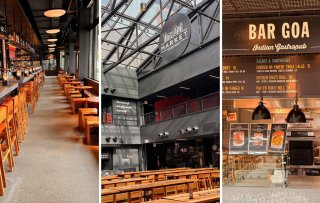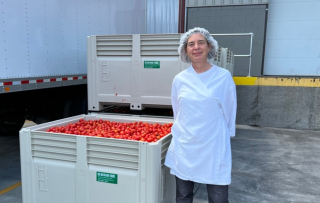Recruiting, training and retaining young people in restaurant’s kitchens is one of the greatest challenges faced by the hospitality industry.
“As the pool of people willing to work in the industry shrinks, more kitchen jobs open up. This creates a growing supply and demand gap. Worries grow as many argue this challenge might start spilling out into the public with slower service and decreasing meal quality”.
This passage is taken from the research report of Beatriz Jacoste, one of the fifteen talented students who had the opportunity to embark on the Food Innovation Global Mission to identify and analyze the existing trends that will positively impact the future of food.
The program allowed the delegation to conduct ethnographic research in the most relevant Global Food Hubs across America, Asia, and Europe.
Working conditions
Beatriz investigated the causes at the root of the global shortage of chefs. On the one hand TV shows and celebrity chefs are increasing the value and improving the general perception of the industry, but on the other hand they present a distorted view of the business and attract aspiring chefs for the wrong reasons: money and fame.
Interestingly, all interviewed chefs agreed that the essential drivers for a chef must be passion, attitude, and persistence. These qualities are necessary when working in the kitchen, the so-called “war-zone”. Strict hierarchical structure, time-intensive activities, and stressful working conditions are the challenges that kitchen staff has to deal with on a daily basis. These conditions lead people to stay away from kitchen jobs, growing the gap between supply and demand and forcing restaurateurs to offer better compensation. Nevertheless, this quick fix is expected to have repercussions for the guests’ checks and lead to less revenue.
Culinary Education
To top off this evidently fairly broken system, culinary schools are not providing adequate education and are giving students unrealistic expectations. Several interviewees concluded that culinary training is outdated and unable to prepare students to be the chefs of tomorrow: chefs able to manage both back and front of the house activities; able to coach and train employees while at the same time curating the guests experience.
Solutions for the future
The conducted research led Beatriz to identify several possible solutions that could improve the current situation.
The first step is to create a working environment that promotes employees' wellbeing by providing opportunities for engagement, growth & development, and recognition.
At the Spanish restaurant Alma in Shanghai, the staff is encouraged to cook and eat their favorite Chinese dishes together before service. In the same city, at Pirata, chefs used to cook in an open kitchen in the middle of the restaurant, fostering interaction between staff and guests and boosting motivation.
Providing free training and courses would also add value to the working experience by helping employees to grow faster and achieve their potential.
With an eye on the future, American-born projects like the Green Bronx Machine, Future Chefs and the Culinary Management Degree at Le Cordon Bleu, aim to attract the right future talent to the industry from a young age and teach a comprehensive set of both hard and soft skills: from cooking techniques to leadership and management skills. The aim is to develop kitchen staff that will be able to have a holistic view of restaurant operations.
Technology might be the answer
New technologies are also offering useful solutions to reshape the current industry: companies like Google Food and the Stanford Dining Services are already investing in kitchen robotics and believe that robots will have a positive impact on the industry. For example, Robots like Moley, by Moley Robotics, are able to mimic a chef’s movements and perfectly replicate a recipe.
Want to know more about what kind of chefs will inhabit the future kitchens? Read the Food Inspiration magazine's article ‘Future Chefs’ (on desktop, tablet or laptop). Never miss out on food trends and inspiration, subscribe here to the free digital magazine.
.png-28x28.png) Written by
Written by 


























